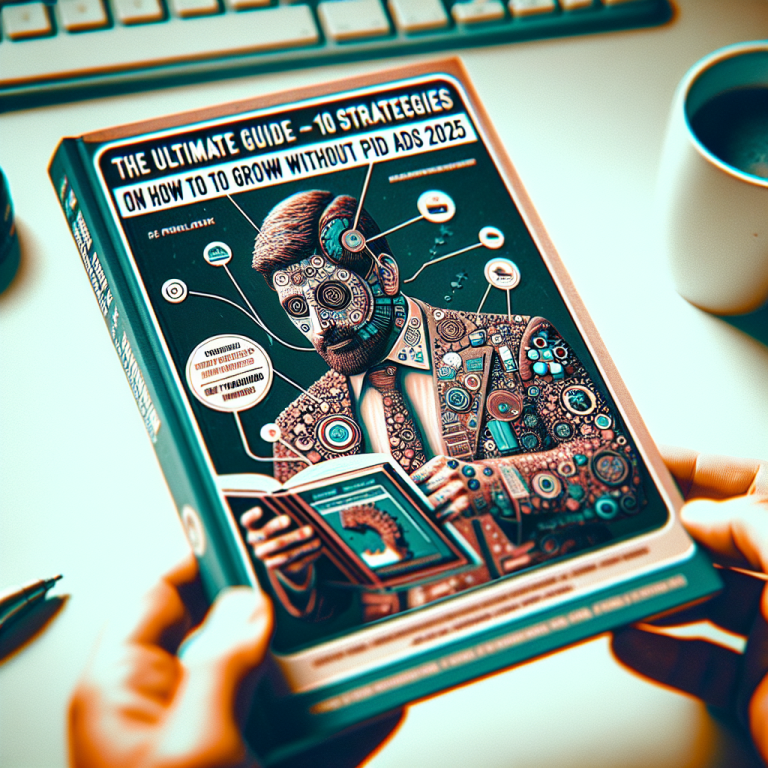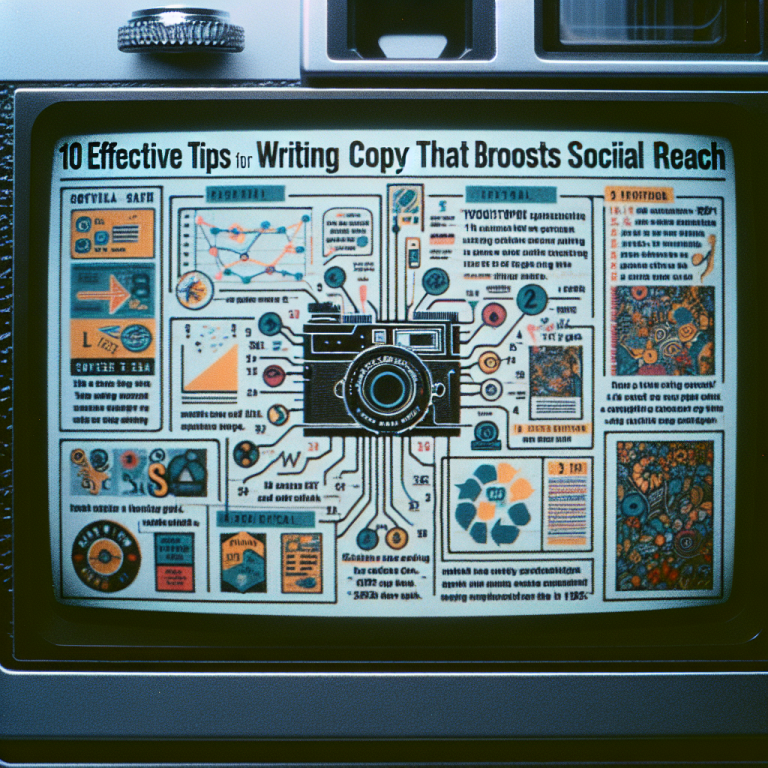How AI is Changing Copywriting in 2025: 7 Powerful Strategies You Need
Table of Contents
- 1. Leveraging AI for Personalized Content
- 2. Automating Content Generation at Scale
- 3. Enhancing SEO with AI-powered Keyword Research
- 4. Using AI to Improve Content Quality and Readability
- 5. Integrating AI Chatbots for Real-time Engagement
- 6. Predictive Analytics to Anticipate Audience Needs
- 7. Ethical Considerations and AI Transparency
1. Leveraging AI for Personalized Content
Understanding Audience Segmentation
One of the groundbreaking ways AI is changing copywriting in 2025 is through highly personalized content. Using AI algorithms, marketers can analyze vast amounts of user data to segment audiences based on preferences, behaviors, and demographics. This allows for tailor-made messaging that resonates more effectively. For example, e-commerce brands now customize product descriptions and email campaigns for individual customers, increasing engagement and conversion rates.
By deploying machine learning models that identify patterns in customer interactions, brands can predict what type of content will appeal to different segments. This approach not only improves user experience but also maximizes ROI on marketing efforts.
Implementing AI-driven personalization tools is simpler than ever, with many platforms offering plug-and-play solutions to get started. These tools can dynamically adapt website copy, email subject lines, or ad copy in real-time according to user data, enhancing the relevance of every message.
Case Study: Personalization Success in 2025
One notable example is a major online fashion retailer that employed AI for personalized homepage content. As a result, they observed a 35% increase in click-through rates and a 20% rise in sales within three months of implementation. This demonstrates how AI is shifting copywriting towards a more individualized and data-driven approach.
To stay competitive in 2025, brands need to embrace AI-powered personalization tools. Start by integrating customer data platforms with AI modules to customize user experiences seamlessly.
Actionable Tip: Use AI analytics to continuously update your audience segments and refine your messaging for optimal relevance.
2. Automating Content Generation at Scale
The Rise of AI Writing Assistants
In 2025, AI writing assistants are no longer just tools but essential partners in content creation. Platforms like GPT-5 and beyond enable copywriters to generate high-quality drafts quickly, freeing up time for strategic thinking and creative refinement. These tools analyze your brand voice and produce compelling copy that aligns with your goals.
This shift allows businesses to publish content more frequently and consistently, which is critical in todayâs fast-paced digital landscape. Content teams can now produce social posts, blog articles, and product descriptions at an unprecedented scale, ensuring a continuous online presence.
Moreover, AI-generated content is becoming more sophisticated, with contextual understanding that reduces the need for extensive editing. This streamlines workflows and accelerates content cycles.
Best Practices for Using AI Content Generators
To maximize AI’s potential, itâs vital to set clear tone and style guidelines so that generated content stays aligned with your brand identity. Always review and edit AI drafts before publishing to ensure factual accuracy and human warmth.
Start small by automating routine tasks like meta descriptions or simple blog summaries. Gradually expand to more complex content as your confidence in AI’s capabilities grows.
Pro Tip: Combine AI tools with human creativity for the best resultsâuse AI to generate ideas and drafts, then infuse your unique voice for authenticity.
3. Enhancing SEO with AI-powered Keyword Research
Smarter Keyword Identification
In 2025, AI-driven SEO tools are revolutionizing how copywriters discover and prioritize keywords. Instead of manual research, AI platforms analyze search trends, competitor content, and user intent to recommend highly relevant keywords and phrases.
This allows for more strategic content planning, ensuring your articles are optimized for what your audience is actively searching for. Enhanced keyword insights lead to higher search rankings and increased organic traffic.
Popular tools now incorporate natural language processing to recommend long-tail keywords and topic clusters, helping cover broader landscaping in search results and improve topical authority.
Leveraging AI for Content Optimization
Once keywords are identified, AI tools can automatically optimize your copy, suggest header tags, and enhance meta descriptions. This saves considerable time and ensures your content ranks better from the outset.
Additionally, AI can continuously monitor your content’s performance and suggest on-the-fly adjustments to maintain or improve rankings.
Tip: Use AI-powered SEO audits periodically to ensure your content remains optimized as search algorithms evolve in 2025.
4. Using AI to Improve Content Quality and Readability
Grammar and Style Enhancement
AI tools like Grammarly and Hemingway Editor have become more advanced, helping copywriters craft clearer and more engaging content. These applications analyze readability scores, sentence structure, and tone, providing real-time corrections and suggestions.
In 2025, AI not only corrects errors but also offers stylistic improvements tailored to your target audience. Whether youâre writing casual blog posts or professional whitepapers, AI ensures your language hits the right note.
This consistently improves content quality, reduces editing cycles, and enhances user engagement.
Ensuring Accessibility and Inclusivity
AI-driven accessibility tools analyze your content for inclusivity, ensuring it meets standards like WCAG. They flag complex language, suggest simpler alternatives, and recommend features to aid users with disabilities.
Inclusive copywriting fosters broader reach and demonstrates social responsibility, which is crucial for brand reputation in 2025.
Pro Tip: Regularly run your content through AI accessibility checkers to stay compliant and inclusive.
5. Integrating AI Chatbots for Real-time Engagement
Enhancing Customer Support and Interaction
AI-powered chatbots are now integrated into websites and social media channels, providing instant support and personalized recommendations. Copywriters are shifting towards creating conversational scripts that feel natural and engaging.
In 2025, these chatbots not only answer FAQs but also guide users through complex processes, capturing leads and increasing conversions. They enable continuous engagement without human intervention, making content creation more dynamic.
Effective chatbot copy relies on AI to understand context, sentiment, and intent â shifting traditional static copy to interactive experiences.
Best Practices for Chatbot Scriptwriting
Create conversational, empathetic responses that align with your brand voice. Use AI analytics to identify common user questions and craft targeted scripts that improve customer satisfaction.
Regularly update chatbot content based on user feedback and AI insights to maintain relevance and effectiveness.
Tip: Keep your chatbot scripts flexible, allowing AI to adapt responses in real-time, thus providing a genuinely personalized user experience.
6. Predictive Analytics to Anticipate Audience Needs
Forecasting Content Trends and Preferences
In 2025, predictive analytics have become a cornerstone of strategic copywriting. AI models analyze historical data and current trends to forecast what topics, keywords, or formats will resonate with your audience in the near future.
This proactive approach helps businesses stay ahead of the curve, creating content that anticipates audience needs rather than just reacting to them.
For example, brands have successfully launched new products or campaigns based on AI forecasts, achieving better engagement and faster growth.
Implementing Predictive Data into Content Strategy
Start by integrating AI analytics tools into your content planning process. Regularly review predictive reports and adjust your editorial calendar accordingly.
Combine these insights with human expertise to craft compelling narratives that line up with predicted trends, giving your brand a competitive advantage in 2025.
Tip: Use predictive analytics to identify emerging topics early and prioritize content around them.
7. Ethical Considerations and AI Transparency
Transparency in AI-driven Copywriting
As AI becomes more integral in copywriting, transparency about AI-generated content is essential. Consumers appreciate honesty about how their data is used and how content is created.
In 2025, brands that openly communicate their use of AI enjoy increased trust and loyalty. Clearly labeling AI-generated content and explaining your privacy policies can foster positive relationships.
This approach not only complies with legal standards but also aligns with ethical branding practices.
Addressing Bias and Ensuring Fairness
AI systems are only as good as the data they are trained on. Bias in AI models can lead to unfair or insensitive copy. Marketers must actively audit AI outputs for bias and ensure inclusivity.
Regular review and diversity in training data are critical to mitigating bias. Ethical AI usage will remain a top priority for brands striving for authenticity in 2025.
Best Practice: Collaborate with AI developers to fine-tune models and incorporate ethical guidelines into your content workflows.
Conclusion
Understanding how AI is changing copywriting in 2025 is vital for staying competitive in todayâs digital landscape. From personalized content to predictive analytics, AI empowers marketers to create more relevant, scalable, and ethical content than ever before. Embracing these technological advancements allows brands to connect more deeply with their audiences and achieve remarkable results. If you want to succeed now and in the future, integrating AI into your copywriting strategy is no longer optional â itâs essential.
Frequently Asked Questions
1. How is AI impacting copywriting trends in 2025?
AI is revolutionizing copywriting in 2025 by enabling personalized content, automating large-scale content production, enhancing SEO, and improving overall content quality. These changes allow brands to engage audiences more effectively and efficiently.
2. What are some effective AI tools for copywriters in 2025?
Tools like GPT-5, Grammarly, Surfer SEO, and AI chatbots are leading the way. They help generate content, optimize for search engines, ensure readability, and provide real-time engagement.
3. Can AI replace human copywriters completely?
While AI can handle many repetitive and data-driven tasks, human creativity, empathy, and ethical judgment are irreplaceable. The best approach combines AI efficiency with human insight for optimal results.
4. How can I ensure ethical AI use in my copywriting?
Be transparent about AI-generated content, audit outputs for bias, use diverse training data, and follow privacy regulations. Ethical use builds trust and strengthens your brand’s reputation.






